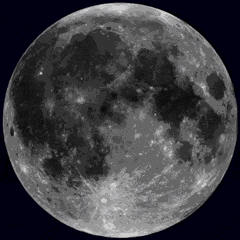<p >Following the <a href="https://militarywatchmagazine.com/article/russian-air-force-receives-new-su35-fighters-growing-exports" target="_blank">delivery</a> of the year’s first batch of Su-35 fighters in the final week of March, General Director of the state run United Arms Corporation Vadim Badekha revealed that plans were underway to accelerate production of the aircraft. “Our priority is to ramp up output of Su-34, Su-35, and Su-57 aircraft… Each type will see an increase in manufacturing volume this year. To support this, we will continue expanding our production footprint,” he stated, with officials at the United Arms Corporation observing that the firm was investing in workforce training and infrastructure modernisation to eliminate bottlenecks and sustain higher production rates. The revelation came as a surprise to aviation analysts, as while <a href="https://militarywatchmagazine.com/article/russian-new-su34-third-consecutive-month" target="_blank">expansion</a> in the <a href="https://militarywatchmagazine.com/article/facilities-expanded-su57-fighter-production" target="_blank">production scales</a> of the Su-34 strike fighter and&nbsp;Su-57 fifth generation fighter had been confirmed, the Su-35 was previously expected to be phased out of production in the early 2030s as the two heavier aircraft were seen as more cost effective. The Su-35’s range and weapons carrying capacity are significantly inferior to those of the Su-34, which can be manufactured at under two thirds of the cost, while its performance in all roles is markedly inferior to that of the Su-57 whether for air defence suppression, air-to-air combat, or other missions.</p><p ><img src="https://militarywatchmagazine.com/m/articles/2025/04/02/article_67eda7aa95d539_77768339.jpeg" title="Russian Air Force Su-35"></p><p >The decision to expand production of the Su-35 is likely to have been motivated by two primary factors. The first is the expansion of the Russian fighter fleet at a time of high defence spending and high tensions with NATO members, with the Defence Ministry appearing to be satisfied with the Su-35’s performance in the Ukrainian theatre. Su-35s have played a leading role in air-to-air operations in the Russian-Ukrainian War since February 2022. One of the class’&nbsp;<a href="https://militarywatchmagazine.com/article/four-su-27-flankers-shot-down-over-western-ukraine-in-march-5-battle-which-russian-asset-could-have-done-it" >most notable successes&nbsp;</a>occurred in March 2022, when the aircraft reportedly&nbsp;<a href="https://militarywatchmagazine.com/article/su-27-flanker-sees-first-ever-losses-in-air-to-air-combat-four-shot-down-in-massive-battle-over-zhytomir" >shot down four&nbsp;</a>Ukrainian Air Force Su-27 fighters near the city of Zhytomir in a single engagement. Su-35s have taken no losses in air-to-air combat, while <a href="https://militarywatchmagazine.com/article/russian-su-35s-claims-three-air-to-air-kills-over-donetsk-one-mig-29-and-two-su-25s-reports" >further kills</a>&nbsp;have been achieved against aircraft including Su-27s, MiG-29s,<a href="https://militarywatchmagazine.com/article/did-russia-s-su-35s-fighter-just-get-another-kill-over-ukraine-su-24-shot-down-near-belarusian-border" >&nbsp;Su-24Ms</a>, Su-25s, Mi-8 helicopters, and a wide range of drone classes. This experience led the Russian Air Force from September 2022 to <a href="https://militarywatchmagazine.com/article/russian-aggressor-unit-su35s-useful" >expand the use</a> of Su-35s for aggressor training. </p><p >Despite their successes, Su-35s have nevertheless proven far more constrained in their beyond visual range targeting capabilities than Russia’s <a href="https://militarywatchmagazine.com/article/russian-mig31bm-deliver-prized" target="_blank">MiG-31BM interceptors</a>, primarily due to their lack of sensors with comparable power to the MiG’s N007M. Development of a new radar for the Su-35 based on the Su-57’s N036 AESA radar has been widely speculated, but has yet to be confirmed. Expanded Su-35 production will allow the Russian Air Force not only to replace ageing Cold War era fighters such as MiG-29s more quickly, but also to form new fighter units, with the appeal of doing so expected to be significantly higher should the fighters integrate newer sensors and armaments.&nbsp;</p><p ><img src="https://militarywatchmagazine.com/m/articles/2025/04/02/article_67eda7f9ac4192_27333267.jpg" ></p><p >Alongside the expansion of domestic demand for new fighter aircraft, the second factor likely to have influenced the decision to expand production of the Su-35 is that the fighter class has also seen export demand grow significantly over the last two years. Following the emergence of a&nbsp;number of reports from Algerian sources from September 2024 that the Algerian Air Force would procure the Su-35, the first of the aircraft were <a href="https://militarywatchmagazine.com/article/algerian-su35-reports-interpret" target="_blank">confirmed</a> six months later to have begun deliveries. The scale Algerian procurements remains unknown, but is expected to remain at approximately two dozen fighter, as the bulk of future fighter orders from Russia are expected to be for more advanced Su-57 fighters which will <a href="https://militarywatchmagazine.com/article/algeria-confirmed-first-foreign-client-russia-su57-how-many" target="_blank">begin deliveries</a> before the end of the year. </p><p >Beyond Algeria, Iran has been reported since mid-2022 to have placed orders for the Su-35, with&nbsp;Iranian Revolutionary Guard Corps General Ali Shadmani having&nbsp;<a href="https://militarywatchmagazine.com/article/iran-confirms-order-finalised-su35-fighters" >confirmed</a>&nbsp;in January 2025 that orders had been placed for the aircraft.&nbsp;Iran’s fleet of close to 200 of obsolete Vietnam War era fighters leaves significant room for the country to procure the Su-35 on a significant scale, with planned procurement of 64 or more of the aircraft having been reported. Iranian orders are likely to have been the primary factor leading to the expansion of Su-35 program, and have the potential to turn the fighter from a relatively modest performer on export markets into a significant success that brings foreign sales to over 100 fighters. The possibility of other clients for the fighter emerging has also been raised, with geopolitical trends affecting&nbsp;<a href="https://militarywatchmagazine.com/article/a-new-phase-in-indonesia-s-long-effort-to-purchase-russian-su-35-fighters-ambassador-confirms-contract-still-in-effect" target="_blank" >Indonesia</a>&nbsp;and&nbsp;<a href="https://militarywatchmagazine.com/article/expert-russia-nkorea-joint-fighter-units" target="_blank" >North Korea</a>&nbsp;fuelling speculation that one of them could procure the aircraft. The relatively small size of the Russian Air Force, and its simultaneous procurement of four separate fighter classes, makes export demand critical to making expanded production of the Su-35 cost effective.</p>
